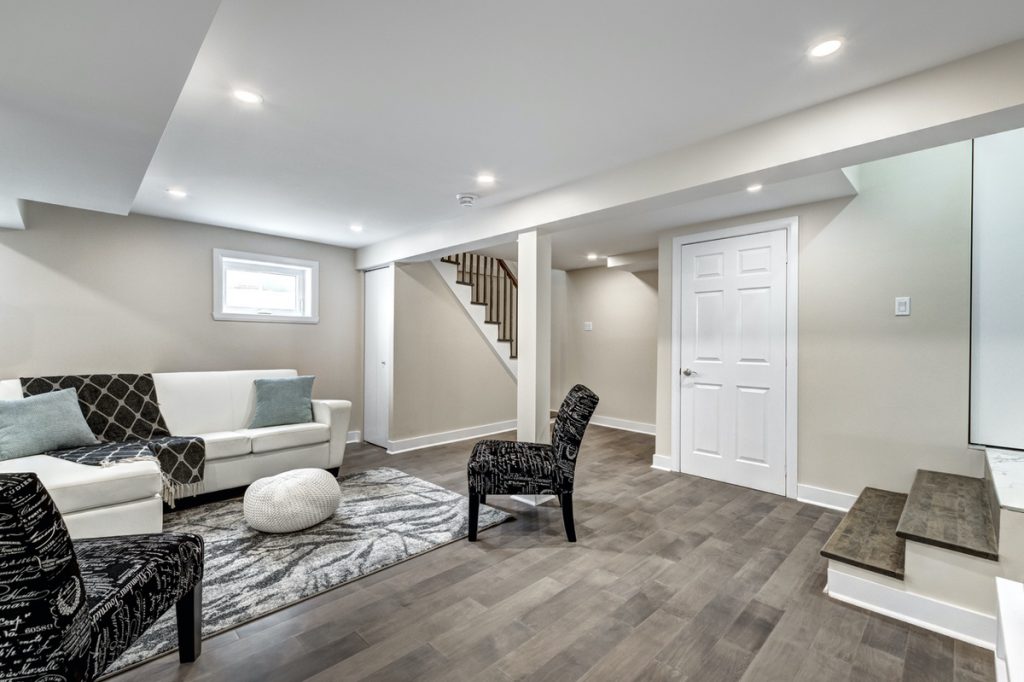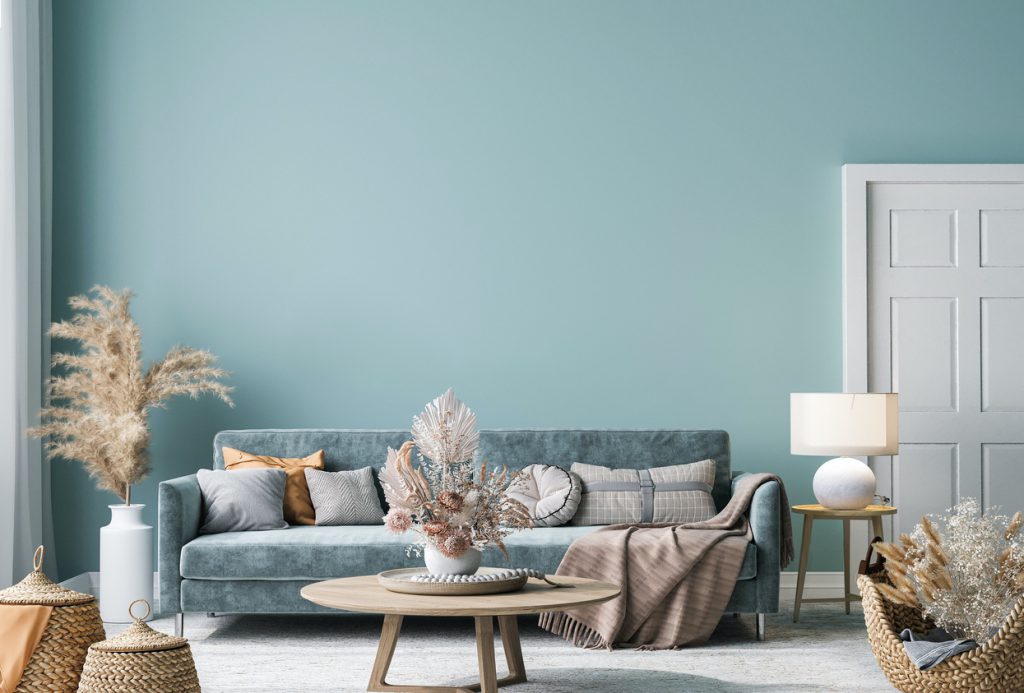When it comes to interior house painting, choosing the right color is crucial. The color of your walls can have a significant impact on the overall ambiance and mood of a room. It sets the tone for the space and can make a room feel cozy, vibrant, or relaxing.
With so many color options available, it can be overwhelming to make a decision. In this article, we will explore the importance of choosing the right color for interior house painting and provide guidance on selecting the best color schemes for different rooms.
Importance of Choosing the Right Color for Interior House Painting
The color you choose for your interior house painting can greatly influence the atmosphere of your home. It has the power to evoke emotions, create a sense of harmony, and even affect our mood and energy levels. A well-chosen color can transform a dull and uninspiring room into a vibrant and inviting space. On the other hand, a poorly chosen color can make a room feel cramped, overwhelming, or devoid of personality.
Impact of Color on the Overall Ambiance and Mood of a Room
Color psychology plays a significant role in interior design. Different colors have different psychological effects on our emotions and perceptions. For example, warm colors like red, orange, and yellow are known to stimulate energy and create a sense of warmth and coziness. Cool colors like blue, green, and purple, on the other hand, have a calming and soothing effect, making them ideal for creating a relaxing atmosphere.
Factors to Consider when Choosing Interior House Paint Colors
Before diving into the world of colors, there are a few factors to consider to ensure you make the best choice for your home:
Lighting Conditions
The lighting in a room can greatly affect how a color appears. Natural light, artificial light, and the direction of light can all impact the way colors are perceived. It’s essential to consider the lighting conditions in each room before selecting a color. A color that looks vibrant and inviting in a well-lit room might appear dull and lifeless in a dimly lit space.
Room Size and Layout
The size and layout of a room should also be taken into account when choosing interior house paint colors. Lighter colors tend to make a room feel more spacious and open, while darker colors can create a cozy and intimate atmosphere. If you have a small room, opting for lighter shades can help maximize the perception of space.
Existing Furniture and Decor
Consider the existing furniture and decor in your home when selecting paint colors. The color of your walls should complement the overall aesthetic and style of your space. If you have bold and vibrant furniture, neutral wall colors can provide a balanced backdrop. On the other hand, if your furniture and decor are more understated, you may opt for bolder wall colors to add visual interest.
Personal Preferences and Style
Ultimately, your personal preferences and style should guide your color choices. Consider the colors that resonate with you and reflect your personality. Whether you prefer a minimalist and monochromatic palette or a vibrant and eclectic mix of colors, your home should be a reflection of your unique taste and style.

Popular Interior House Paint Colors
Now that we understand the importance of choosing the right color for interior house painting and the factors to consider, let’s explore some popular color options:
Neutral Colors
Neutral colors are timeless and versatile, making them a popular choice for interior house painting. They provide a blank canvas that can easily be paired with different furniture and decor styles. Some popular neutral colors include:
- Beige
- Gray
- Cream
- Taupe
Neutral colors create a sense of calm and sophistication, making them suitable for various rooms in the house.
Benefits of Neutral Colors in Creating a Versatile and Timeless Look
Neutral colors have several benefits when it comes to interior house painting. They:
- Create a sense of balance and harmony
- Allow other elements in the room to stand out
- Make a space feel larger and more open
- Provide a timeless and classic look
Examples of Popular Neutral Colors for Interior House Painting
- Beige
- Gray
- Cream
- Taupe
Warm Colors
Warm colors are known for their ability to create a cozy and inviting atmosphere. They include shades of red, orange, and yellow. Warm colors can make a room feel energized and lively. Some examples of warm colors suitable for different rooms include:
- Living room: Terracotta, Burnt Orange, Golden Yellow
- Bedroom: Deep Red, Warm Pink, Amber
- Kitchen: Sunflower Yellow, Rustic Orange, Brick Red
Psychological Effects of Warm Colors on Mood and Energy Levels
Warm colors have a stimulating effect on our mood and energy levels. They can create a sense of warmth, excitement, and passion. These colors are often associated with feelings of happiness, energy, and enthusiasm. Warm colors can be particularly beneficial in rooms where socialization and activity take place, such as the living room or kitchen.
Cool Colors
Cool colors, including shades of blue, green, and purple, have a calming and soothing effect. They can create a sense of tranquility and relaxation in a room. Some examples of cool colors suitable for different rooms include:
- Living room: Sky Blue, Sage Green, Lavender
- Bedroom: Soft Blue, Mint Green, Lilac
- Bathroom: Aquamarine, Seafoam Green, Periwinkle
Psychological Effects of Cool Colors on Creating a Calming and Relaxing Atmosphere
Cool colors have a calming effect on our emotions and can promote a sense of serenity and peace. These colors are often associated with feelings of relaxation, tranquility, and clarity. Cool colors are particularly suitable for spaces where you want to create a peaceful and soothing environment, such as bedrooms and bathrooms.
Accent Colors
Using accent colors strategically can add visual interest and highlight specific areas in a room. Accent colors are typically bolder and more vibrant than the main wall colors. They can be used on furniture, accessories, or as a focal point on a single wall. Examples of effective accent colors for interior house painting include:
- Crimson Red
- Emerald Green
- Sunset Orange
Accent colors can bring life and personality to a space, creating a focal point and adding depth to the overall design.

Choosing the Right Color Scheme for Different Rooms
Now that we have explored different color options, let’s discuss how to choose the right color scheme for different rooms in your home:
Living Room
The living room is often the heart of the home, where family and friends gather. When choosing colors for the living room, consider creating a welcoming and comfortable space. Some recommended color schemes for living rooms include:
- Neutral colors with pops of accent colors
- Warm earth tones for a cozy and inviting atmosphere
- Cool blues and greens for a calming and serene ambiance
Bedroom
The bedroom is a place of rest and relaxation. When selecting colors for the bedroom, focus on creating a soothing and restful environment. Some recommended color schemes for bedrooms include:
- Soft pastel colors for a calming and dreamy atmosphere
- Cool blues and greens for a peaceful and serene ambiance
- Neutral colors with warm accents for a cozy and intimate feel
Kitchen
The kitchen is a space where functionality and aesthetics go hand in hand. When choosing colors for the kitchen, consider enhancing the overall look and feel of the space. Some recommended color schemes for kitchens include:
- Bright and vibrant colors for a lively and energetic atmosphere
- Neutral colors with pops of bold accents for a modern and stylish look
- Warm earth tones for a cozy and inviting ambiance
Bathroom
The bathroom is a space where cleanliness and freshness are essential. When selecting colors for the bathroom, focus on creating a clean and refreshing atmosphere. Some recommended color schemes for bathrooms include:
- Light and airy colors for a fresh and spacious feel
- Cool blues and greens for a calming and rejuvenating ambiance
- Neutral colors with pops of vibrant accents for a modern and stylish look
Home Office
The home office is a space where productivity and concentration are key. When choosing colors for the home office, consider promoting a focused and inspiring environment. Some recommended color schemes for home offices include:
- Neutral colors with pops of energizing accents for a balanced and stimulating atmosphere
- Cool blues and greens for a calming and focused ambiance
- Warm earth tones for a cozy and inviting feel
Tips for Successful Interior House Painting
To ensure a successful interior house painting project, consider the following tips:
Sample Testing and Color Visualization
Before committing to a color, it’s essential to test it out in the actual space. Paint small sections of the wall with your chosen colors and observe how they look in different lighting conditions. Additionally, utilize online color visualization tools to get a better idea of how the colors will appear in your space.
Creating a Cohesive Color Flow Throughout the House
Maintaining a cohesive color flow throughout your home can create a sense of harmony and unity. Consider how the colors in one room will transition into the next. This doesn’t mean that every room has to be the same color, but there should be a sense of connection and balance between the different spaces.
Balancing Bold Color Choices with Neutral Tones
If you’re drawn to bold and vibrant colors, it’s essential to balance them with neutral tones. Using bold colors as accents or focal points can add visual interest without overwhelming the space. Neutral colors can provide a calming backdrop and prevent the room from feeling too busy or chaotic.
Hiring a Professional Painter
If you’re unsure about choosing the right colors or don’t have the time or skills to paint your home yourself, hiring a professional painter can be a great option. Professional painters have the expertise and experience to help you select the perfect colors for your space and ensure a high-quality paint job. They can also provide valuable advice on color combinations, finishes, and techniques.

FAQs About Choosing A Color For Your House’s Interior
How do I choose the right color for my home?
When choosing a color for your home, consider factors such as lighting conditions, room size and layout, existing furniture and decor, and your personal preferences and style. It’s also helpful to sample test colors and use online visualization tools to see how they will look in your space.
What are some popular neutral colors for interior house painting?
Some popular neutral colors include beige, gray, cream, and taupe. These colors create a sense of balance and harmony, allow other elements in the room to stand out, and provide a timeless and classic look.
What are the psychological effects of warm colors?
Warm colors, such as red, orange, and yellow, have a stimulating effect on our mood and energy levels. They can create a sense of warmth, excitement, and passion, making them suitable for rooms where socialization and activity take place.
What are the psychological effects of cool colors?
Cool colors, such as blue, green, and purple, have a calming effect on our emotions. They can promote a sense of relaxation, tranquility, and clarity, making them suitable for spaces where you want to create a peaceful and soothing environment.
How can I create a cohesive color flow throughout my home?
To create a cohesive color flow, consider how the colors in one room will transition into the next. While each room doesn’t have to be the same color, there should be a sense of connection and balance between the different spaces. Balancing bold color choices with neutral tones can also help create a harmonious overall look.
Final Words
Choosing the right color for interior house painting is a crucial decision that can greatly impact the ambiance and mood of your home. By considering factors such as lighting conditions, room size and layout, existing furniture and decor, and your personal preferences, you can select the perfect colors for each room.
Whether you opt for neutral tones, warm colors, cool colors, or accent colors, the key is to create a harmonious and inviting space that reflects your unique style and personality. Don’t be afraid to experiment and seek professional advice to ensure a successful and visually appealing interior house painting project.




